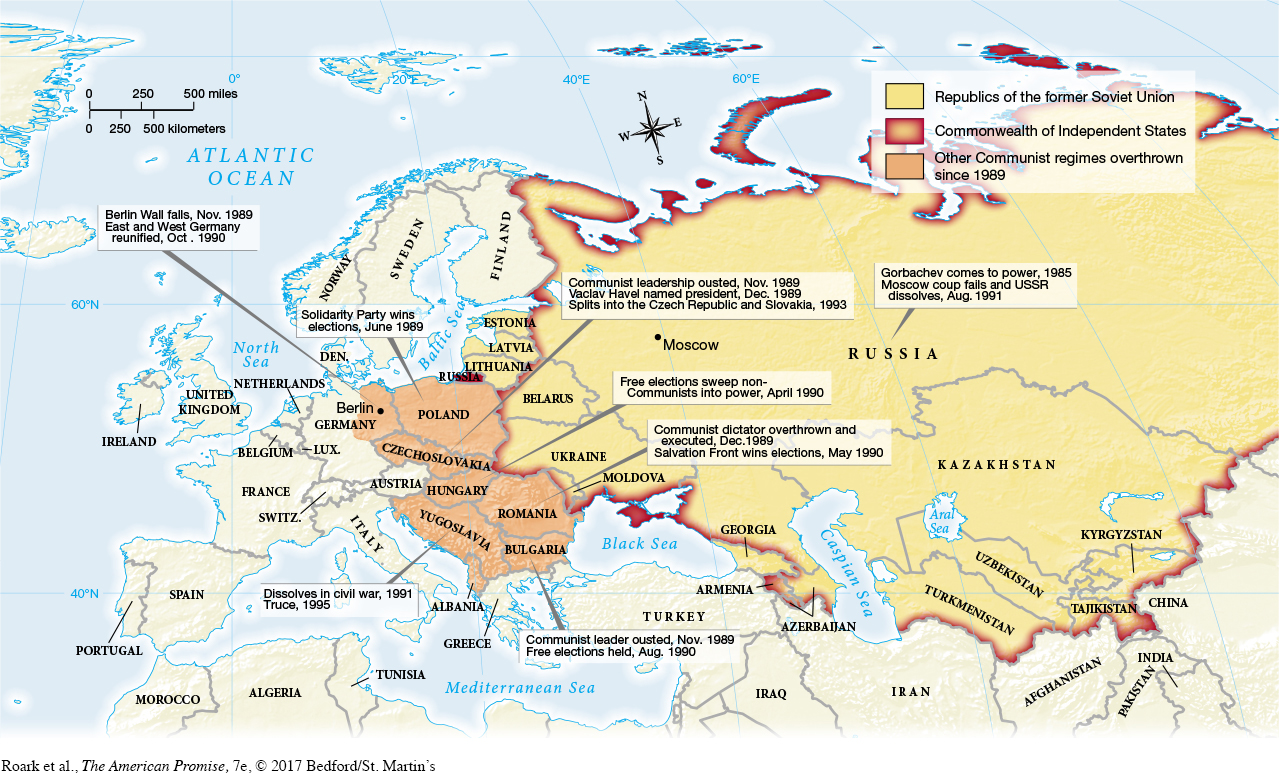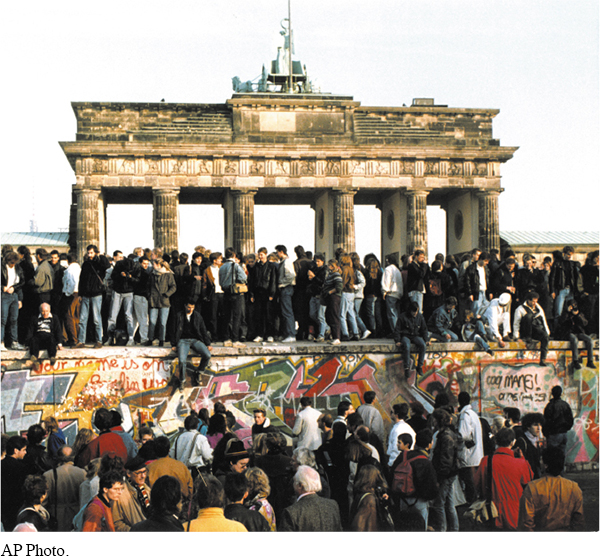The American Promise: Printed Page 895
The American Promise, Value Edition: Printed Page 810
The American Promise: A Concise History: Printed Page 925
The Cold War Ends
While domestic policy remained fairly constant during Bush’s presidency, the world experienced enormous changes. In 1989, the progressive forces that Gorbachev had encouraged in the Communist world (see “A Thaw in Soviet-American Relations” in chapter 30) swept through Eastern Europe, where popular uprisings demanded an end to state repression and inefficient economic bureaucracies. Communist governments toppled like dominoes (Map 31.1), virtually without bloodshed, because Gorbachev refused to prop them up with Soviet armies. East Germany opened its border with West Germany, and in November 1989 ecstatic Germans danced on the Berlin Wall.

The American Promise: Printed Page 895
The American Promise, Value Edition: Printed Page 810
The American Promise: A Concise History: Printed Page 925
Page 896Unification of East and West Germany sped to completion in 1990. Soon Poland, Hungary, and other former iron curtain countries lined up to join the North Atlantic Treaty Organization (NATO), a development that Russia found threatening. Eight former Soviet satellites joined the European Union and the common economic market it had established in 1992. Inspired by the liberation of Eastern Europe, republics within the Soviet Union soon established their own independence. With nothing left to govern, Gorbachev resigned. The Soviet Union had dissolved, and with it the Cold War conflict that had defined U.S. foreign policy for decades.

The American Promise: Printed Page 895
The American Promise, Value Edition: Printed Page 810
The American Promise: A Concise History: Printed Page 925
Page 897Democracy also prevailed in South Africa, which began to dismantle apartheid; this process led in 1994 to the election of the country’s first black president, Nelson Mandela. Colin Powell joked that he was “running out of villains. I’m down to Castro and Kim Il-
“The post–